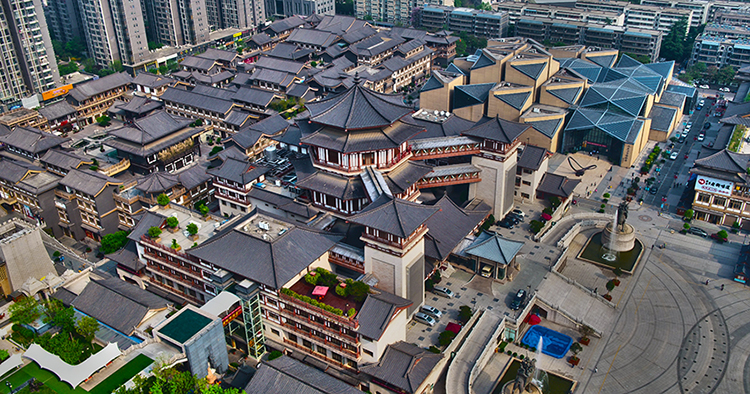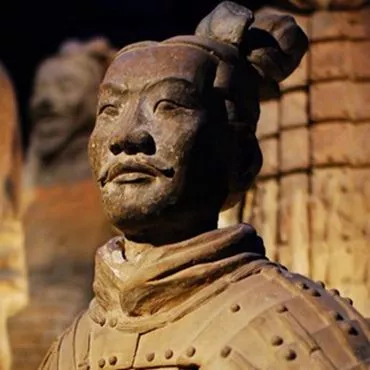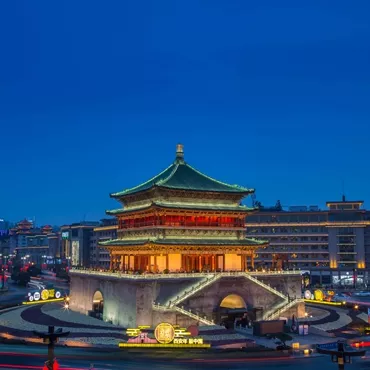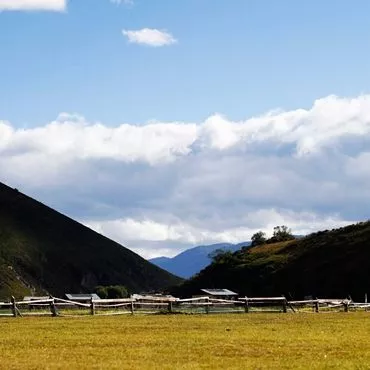The Great Tang West Market

Located in the southwest of the ancient capital of Chang'an (modern-day Laodong Nan Road and Dong Taoyuan Village), the Great Tang West Market was established during the Sui Dynasty (581–618 AD) and flourished during the Tang Dynasty (618–907 AD). Spanning an impressive 1,600 acres and boasting over a million square meters of construction, it was a bustling hub of more than 220 industries, reaching the pinnacle of prosperity in its time. The West Market's trade routes extended west to Rome and east to Goryeo (present-day South Korea and North Korea), marking it as the largest and most developed world trade center, a vibrant entertainment venue, and a cultural exchange center.
The West Market was the lifeblood of the Silk Road's trade network, underpinning its entire economic framework. As the true starting point of the Silk Road, it facilitated the confluence and fusion of the Yellow River, Ganges, and Mediterranean civilizations, accelerating global economic and social development while leaving a profound impact on the tapestry of human history. It served not only as a gateway for the outside world to understand Chang'an and China but also as a pivotal platform for cultural and commercial interactions between East and West.

Today, the Great Tang West Market features a wealth of attractions, including the Great Tang West Market Museum, the Silk Road Business and Travel Street, the International Antique City, the West Market City Shopping Center, the Great Tang West Market Hotel, the Intangible Cultural Heritage City, and the Huji Wine House Performance Center, all of which have become immensely popular among locals and tourists alike.
The Great Tang West Market Museum stands out as the only privately funded archaeological museum in the country, dedicated to the preservation and display of the West Market ruins and reflecting the rich cultural heritage of the Silk Road, the opulent commercial culture of the Tang Dynasty, and the vibrant local market life. This museum has transformed into a cultural hub for Xi'an, serving as a significant public cultural infrastructure. It represents a pioneering effort in the protection of national historical and cultural sites through private capital, earning accolades such as the title of "Model Unit for Cultural Heritage Protection and Inheritance in China." Its innovative investment model has been recognized as one of the five major models for the protection of significant archaeological sites in Shaanxi, paving the way for the conservation and utilization of numerous historical sites across Xi'an and the nation. On May 21, 2017, the museum was awarded the title of "National First-Class Museum" by the National Cultural Heritage Administration, making it the first and only privately-run first-class museum in China.
The West Market City Shopping Center, located at the intersection of major transport routes in Xi'an's urban area and the High-Tech CBD, boasts dual advantages of commercial and scenic resources, covering an expansive 160,000 square meters. It stands as the largest urban complex in Xi'an. The first wave of prestigious brands to set up shop here includes the century-old jewelry brand Harry Winston, adored by royalty and Hollywood stars alike; the indulgent luxury of Davidoff; the audacious fashion label Just Cavalli, known for its wild designs; the Dutch fashion brand CA, pioneering one-stop shopping; the globally recognized fast-fashion giant H&M; and the British fast-fashion brand CAVA. Furthermore, the shopping center’s third floor features a delightful children’s area, where renowned domestic cultural brand Youyoutang's parent-child amusement park and the Yoluoluo Children’s Ice Rink bring quality entertainment experiences to families and kids.
Designed by an internationally acclaimed architectural firm, the West Market City Shopping Center reflects traditional Chinese feng shui principles, harmonizing beautifully with the rich cultural heritage of the Great Tang West Market.
Chang'an, the capital of the Tang Dynasty, was a crown jewel among the world's imperial capitals, serving as a nexus for commercial cultural exchanges between the East and West for over 1,300 years. In the heyday of the Tang Dynasty, the city was home to two major markets: the East Market, catering to domestic trade, and the West Market, known as the "Golden Market," thriving with international commerce.
Fast forward 1,300 years, and the grand revival of the Great Tang West Market Project has emerged on the historical ruins of the West Market. This innovative model of cultural preservation, cultural display, and commercial tourism development serves as a shining example of the success of non-public economic initiatives in Shaanxi’s cultural industry. It has become a new emblem of Xi'an and a bright spot in Shaanxi tourism, beloved by visitors from near and far.















